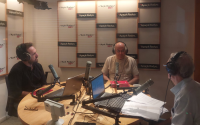6 April 2007The Independent
Even now, the ads on television, radio and the internet continue: "Is your credit bad? Don't worry, we'll provide the loan for the home of your dreams ..." What those commercials should, but do not, add is: go through the small print with a toothcomb. Or else you, too, could be swept up in America's subprime mortgage crisis.
Just as in Britain, homeownership is a traditional goal of American society. But as interest rates have climbed and the housing market has slumped, the number of what are politely called "delinquent" loans has soared. And as home repossessions grow, civil rights groups and presidential contenders alike are stepping into the row over the high risk, or subprime, mortgage market.
In the most sweeping call yet, a coalition of civil rights organisations have demanded a six-month moratorium on foreclosures. They want lenders - whose reckless and sometimes predatory policies are largely blamed for the crisis - to help victims refinance their mortgages, or face law suits.
"We know that there are safe and affordable loans that meet the needs of our communities," said Janet Murguia, the president of the National Council of La Raza, the biggest Hispanic civil rights group in the US, noting that minority groups were especially hard hit by the crisis. Lenders should "match families to the sustainable loans that they should have had in the first place", she added.
The subprime crisis has erupted over the past few months as borrowing rates have turned upwards while house prices have fallen steeply in many parts of the country. All sectors of the mortgage market have been affected but none more so than subprime loans, extended to borrowers with shaky credit histories.
Typically they carry interest rates 2 or 3 per cent above conventional mortgages. But, under complicated formulas, which critics say can come close to fraud, they usually offer very low "teaser" rates for a limited period.
As long as house values were on an upward path, they appeared to carry little risk. People were able to take on far more debt than they could afford. But when interest rates climbed sharply in 2005 and 2006, many were left facing payments they could not meet.
"I feel like they took advantage of me because I'm 77," Jennie Haliburton, one distressed borrower, told a congressional panel investigating the crisis last month. Ms Haliburton said she signed up for a loan with initial monthly payments of $700. However, these jumped to $1,300, an impossible sum for a widow living off a $1,800-a-month social security income.
Her plight drew an emotional response from the Senate Banking Committee, and helped turn the mortgage crisis into a major political issue here.
The Connecticut senator Christopher Dodd, the chairman of the committee and a Democratic presidential candidate, condemned such "risky, exotic mortgages". He accused the Federal Reserve of failing to use existing laws to regulate the market and maintain proper standards. More than two million Americans could see their homes repossessed over the next few years, he warned.
Other Democratic contenders for the White House have leapt into the fray.
Barack Obama has called for a "homeownership preservation summit" between lending groups, regulators and borrowers. "We cannot sit on the sidelines while increasing numbers of families face the risk of losing their homes," he said.
Hillary Clinton wants better protection for borrowers: "This market is clearly broken and if we don't fix it it could threaten our entire housing market," she said last week.
But the industry is resisting the moratorium, calling it an "over-reaction" to the difficulties of the market. Although more than 1 per cent of all US mortgages will end in default, the reason was as likely to be unexpected medical bills or a lost job as abusive lending by a mortgage company, a Bankers Association spokesman said.
The problems of the subprime market have sent shudders through financial markets, amid fears they could spill over into the broader economy. On Monday, New Century Financial, one of the largest US subprime operators, filed for bankruptcy protection.
But the true picture is more complicated. The subprime market is huge, involving loans worth a total $1.3 trillion (£660bn). But although one in six subprime borrowers are at least two months behind on their payments, the majority are not. Moreover, the rate of overall homeownership has jumped from 64 per cent to 69 per cent in little more than a decade, largely thanks to the subprime market which helps people not previously eligible for loans to obtain them.
'We thought it was a great deal'
Tim and Angela Sneary bought their little slice of the American Dream back in 2004. They were smitten by the house the estate agent had shown them in Denver, Colorado - drawn by both the bright-pink paint and the property's $240,000 price tag. "We thought we were getting a deal," said Mr Sneary.
They especially thought they were getting a deal when their agent told them he would find them a mortgage that required no deposit down.
Initially, they thought they would be borrowing at a fixed rate of 6.5 per cent. Each month they would have to pay $1,290, little more than their current rent.
But when they came to close to deal, things had changed. The loans were rather different, and the interest rates were much higher. Now, the Snearys wish they had walked away, but instead they took on additional jobs.
Today the Snearys are set to lose their home. Their problems began when Mr Sneary lost his job and had to take less well paid work. They soon fell behind on their payments. Mrs Sneary took on more hours but, in July 2005, she was in a car crash that left her unable to work for several weeks.
The Snearys are now seeking to sell their home to avoid foreclosure. They have less than two months to do so.
"[The lender] said you're going to have to pay ... or we'll have to go to foreclosure," Mr Sneary said. "Well, I guess I'm going to have to go foreclosure because I've given everything I have to give and you can't squeeze blood from a turnip."
The couple's plan now involves finding new jobs and a place to rent, and they will try to save some money. When they come to buy again they may even make an offer to another family seeking to avoid foreclosure.
Boom then bust
* An estimated 1.5 million homeowners in the US face foreclosure this year.
* In the 1960s, 1970s and 1980s, home ownership in the US stagnated at around 65 per cent. In the past 15 years, it has risen to nearly 69 per cent.
* According to a study released last month by agencies devoted to fair housing, racial minorities are more likely to be given high-cost, subprime mortgages - in six major American cities, black borrowers were 3.8 times more likely than whites to receive a higher-cost home loan.
* Last year, subprime loans made up 20 per cent of the market for new mortgages.
* US interest rates have increased sharply recently - in 2003 and 2004 they were at a historic low of 1 per cent. They have risen to more than 5 per cent.
* In the past five years, the subprime market has risen sharply - it now accounts for nearly a quarter of new mortgages and is worth about $665bn (£337bn). In 2001, it was worth about $200bn and only accounted for 10 per cent of loans.






